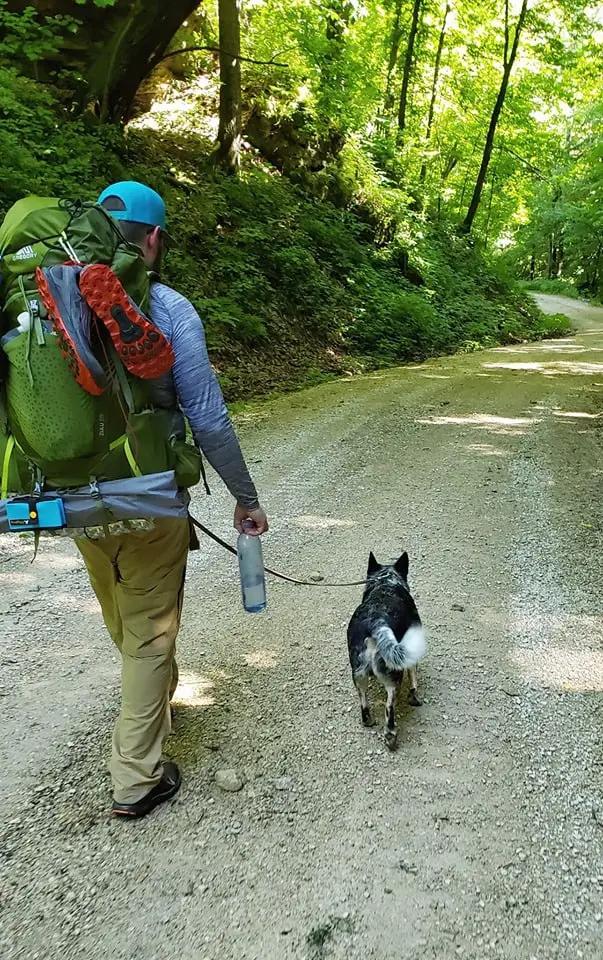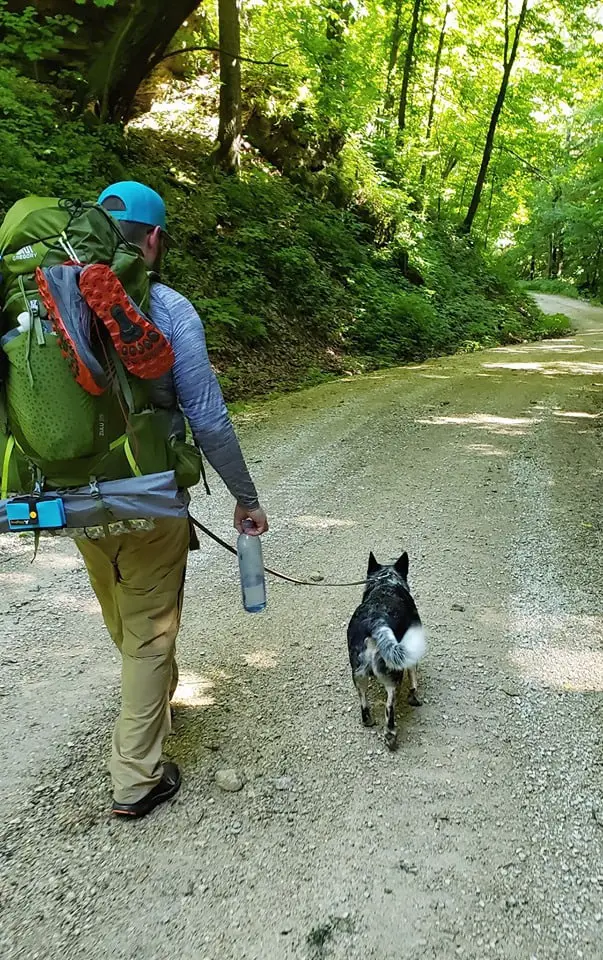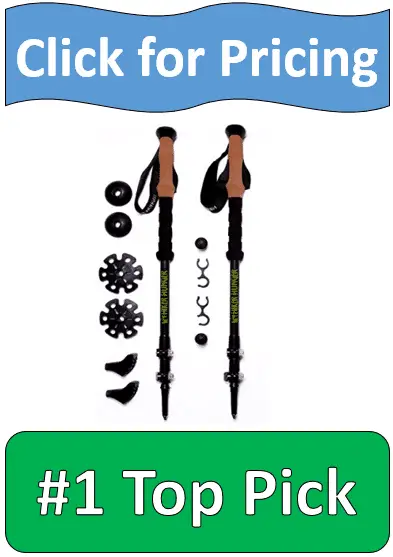
Trekking poles are common equipment you will find that a lot of experienced hikers – but just how important are they? Personally, I don’t always use hiking poles. It’s only under certain hiking conditions that I will.
Not sure whether you need trekking poles or not? Here’s how you can find out.
A trekking pole, commonly known as a hiking pole, is somewhat of a ski pole that has a handle to give you grip while hiking. Hiking poles are often used in pairs. Some hikers prefer the use of a hiking stick.
However, this comes as a single pole. Most hikers, myself included, prefer to use two trekking poles instead of a hiking stick because it offers more advantages.
After a long time of hiking with trekking poles, here’s what I’ve experienced while hiking them and without.
Table of Contents
Why Choose Trekking Poles?
Hiking poles really come in handy when I’m carrying a heavy backpack. It goes without saying that walking for miles on end when you have quite the load on your back is going to be quite the strenuous effort. Especially if you’re going over a lot of rocky, hilly, or difficult terrain. These are all about balance.
Trekking poles will keep you stable on steep inclines and declines. You don’t want to lose your balance because of all that extra weight on your back. Even when you are used to hiking with a heavy pack, once in a while it’s not unusual to hit a point where you get off balance. In those cases, having a steady pair of trekking poles to support yourself can make a big difference.
If you come across a steep decline, trekking poles can offer good anchor points to balance against as you hike downhill. Similarly, if you find a steep incline, you can use the poles to dig in and pull yourself up the slope.
If you hike will involve you crossing over small rivers or streams, trekking poles will help you get through. Using two poles to support your way across slippery rocks will prove highly convenient.
Even when I don’t plan on using trekking poles as I hike, I’ve made it a habit to carry them in my gear just in case. Just as well, they prove rather useful when I need to test the depth of a stream or see how muddy the bottom is,
If you are hiking in snowy weather, hiking poles will greatly improve your balance. You can also use the trekking pole to test the ice of a frozen stream if you have to cross one.
Let’s face it. If you’re hiking you’re more out of your element and at the mercy of mother nature. Trekking poles could prove useful if you have to fight off an animal. Not that I’ve ever done it but it’s crossed my mind more than a couple of times when I’m outdoors. Especially that time with the possum in the middle of the day who decided to be aggressive instead of play dead.
To be honest, I feel safer with my trekking poles than without them. They can also double as tent poles for a cowboy camping setup in an instant, if needed.
If you hike in a region with nettles, poison ivy, or any other plant you would do without interacting with, trekking poles can help you to gently move them to the side as you walk.
If the purpose of your hike is so you can burn some calories, moving your arms back and forth will help you use a little more energy. If you are one of these people whose hands swell when hiking, trekking poles will move the hands closer to where the heart is located, thus enhancing blood flow to the heart.
You can use trekking poles to carry an ultralight shelter. It is a great way to set up camp without carrying a heavy load. You only need to wedge your hiking pole in to anchor your shelter.
This will spare you a good amount of weight on your pack. Even if you’re only day hiking, having an ultralight shelter in your pack as well as hiking poles to give it support is a fabulous method of readying yourself for a survival emergency.
What Benefit Does Hiking Poles Have To Offer Your Knees?
Using your hiking poles will probably not do much to help your knees.
Many peer-reviewed websites quote a study done in 1999 which found that the use of trekking poles alleviates a mere 27% of your knee strain. It’s good but it simply is not that great for a lot of hikers.
In fact, some studies have gone on to claim that there’s nothing to compare in hiking with shock-absorbing poles, standard poles, and without poles at all.
In my experience, I have felt pain in my knees with and without poles. I got rid of the pain entirely by shifting my weight. Rather than heel striking, I now focus my body weight on my fore and midfoot. By doing this I am able to ‘engage my natural shock absorbers’ of which in this case, are my hamstrings that work to buffer any shock felt in my steps.
I strongly feel that hiking with trekking poles allows people to naturally move their weight as well as foot strike forward. This probably plays a significant role in reducing strain off of the knee.
So if you experience any pain in your knee while hiking with trekking poles and you want to alleviate the pain, I would suggest moving your weight forward.
When Not to Use Trekking Poles
I used to carry trekking poles with me everywhere religiously for many years. But then I decided to stop for a while and to be frank, it felt grand to walk freely without another piece of gear imposing its weight on my back. Here’s why I stopped.
The reason I used to hike was so that I could be one with nature. However, the poles started to seem like a barrier disrupting the connection between myself and the earth. So I decided to have a more hands-on approach, if you will, by touching trees, rocks, and dirt. Trust me that doing this will make you feel like a kid again.
I also came to the realization that using poles was helping neither my balance or core. When I don’t have trekking poles, I found that sticking my arms out and moving my weight to balance engages my core and natural balance processes instead of turning them off.
I began to only use the pole to help balance myself when going downhill. Rather than jab down with your hiking poles during your descent, try lower your body and use your hands to gain some balance and make a connection.
When I’m doing longer hikes, avoiding swinging my arms as I walk saves me a lot of energy. Not that it’s that much of a deal on shorter hikes, but if you’re going for something as enduring as a 25-mile day hike at Mt. Whitney, having another 3-8% of energy in your tank could prove the difference.
I did the 22-mile day hike myself; all the way up to Mt. Whitney summit without the help of any trekking poles. Leaving the poles behind saved my body a good amount of energy when the air was thin and strides became tougher. In this case for a rough one day go, ditching the hiking poles was one less thing to deal with. I put my boots and pack on, then hike. Simple.
However, you could argue the other direction as there was more than once where I wouldn’t have minded the extra peace of mind that a good pair of trekking poles can bring to the table.
So Should I Get Hiking Poles?
Some people just adore hiking with trekking poles and I used to be one of them. Nowadays I do or don’t depending on whether I might need them or not. A lot depends on distance. If I’m doing a multi-day hike or thru hike then chances are I’ll take a pair of hiking poles with me. If it’s just a greenbelt trail or a few hours then usually I won’t.
Trekking Pole Recommendations
A lot of trekking sticks that you come across at REI are somewhat similar. They are light in weight, strong, and adjustable. It is best to avoid knockoff models that you see at mass-market stores such as Walmart. Trekking poles have some attractive features you should look for. Here’s what I recommend:
Carbon fiber and aluminum are both really light metals and highly efficient. If you have to bang them up a lot, I would rather you choose aluminum. Carbon fiber provides a bit more shock dampening. It is, however, rather prone to breakages and damage if you really smash them around.
I would not consider shock absorbers necessary. However, if you do locate a pair of trekking sticks that you fancy and they have absorbers, then you should absolutely go for it.
You want your elbow to be at about 90 degrees when you use hiking poles. Most trekking poles can be adjusted making it a highly customizable piece of equipment for all hikers. If not adjustable, REI should provide a size chart to help you find something appropriate for your height.
Some people prefer adjusting the height further up or lower depending on the slope. I have, however, never met anyone who has actually bothered themselves enough to do this.
Try not to worry about baskets or pole tips. As long as you have steel tips and learned how to use your straps correctly, you should be fine. The extras can be a big bonus, but you shouldn’t let them discourage you from getting some top notch hiking poles.
Our Recommended Hiking Poles
- Best Overall Trekking Poles: Hiker Hunger Carbon Fiber Trekking Poles
- Best Durable Trekking Poles: Cascade Mountain Tech
- Best Tri-Fold Carbon Fiber Trekking Poles: Paria Outdoor Products
- Honorable Mention: Foxelli Carbon Fiber Trekking Poles
In Conclusion
There are a lot of little things to pick up on while you are hiking or backpacking for the first time. The good news is that there are plenty of us who believe there’s always room for another hiker or backpacker. There are few ways that compare with a good back country hike when it comes to really getting surrounded by the beauty and awesomeness of nature.
Not to mention seeing the kind of natural beauty and incredible sights that will stick with you for a lifetime.


